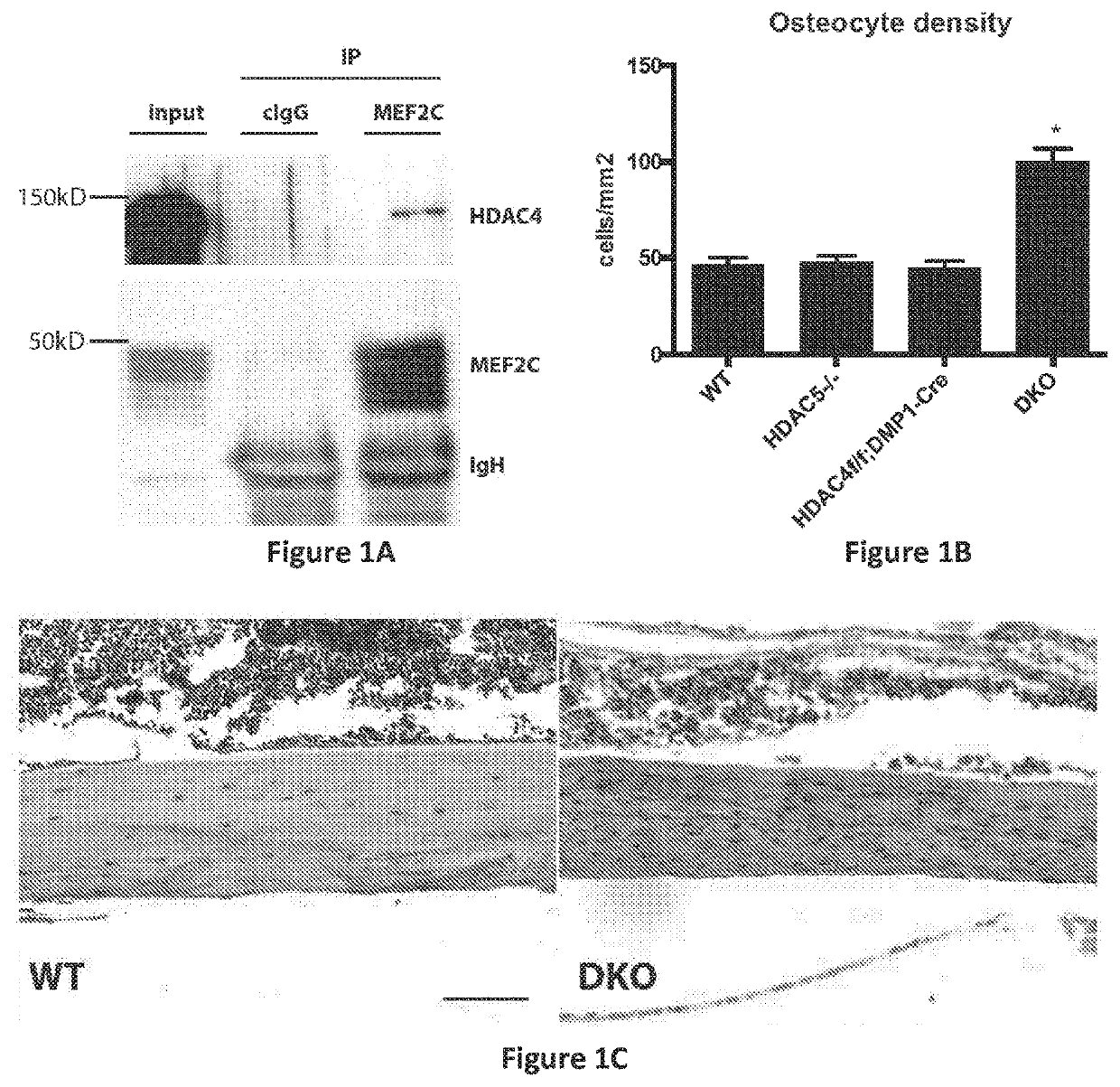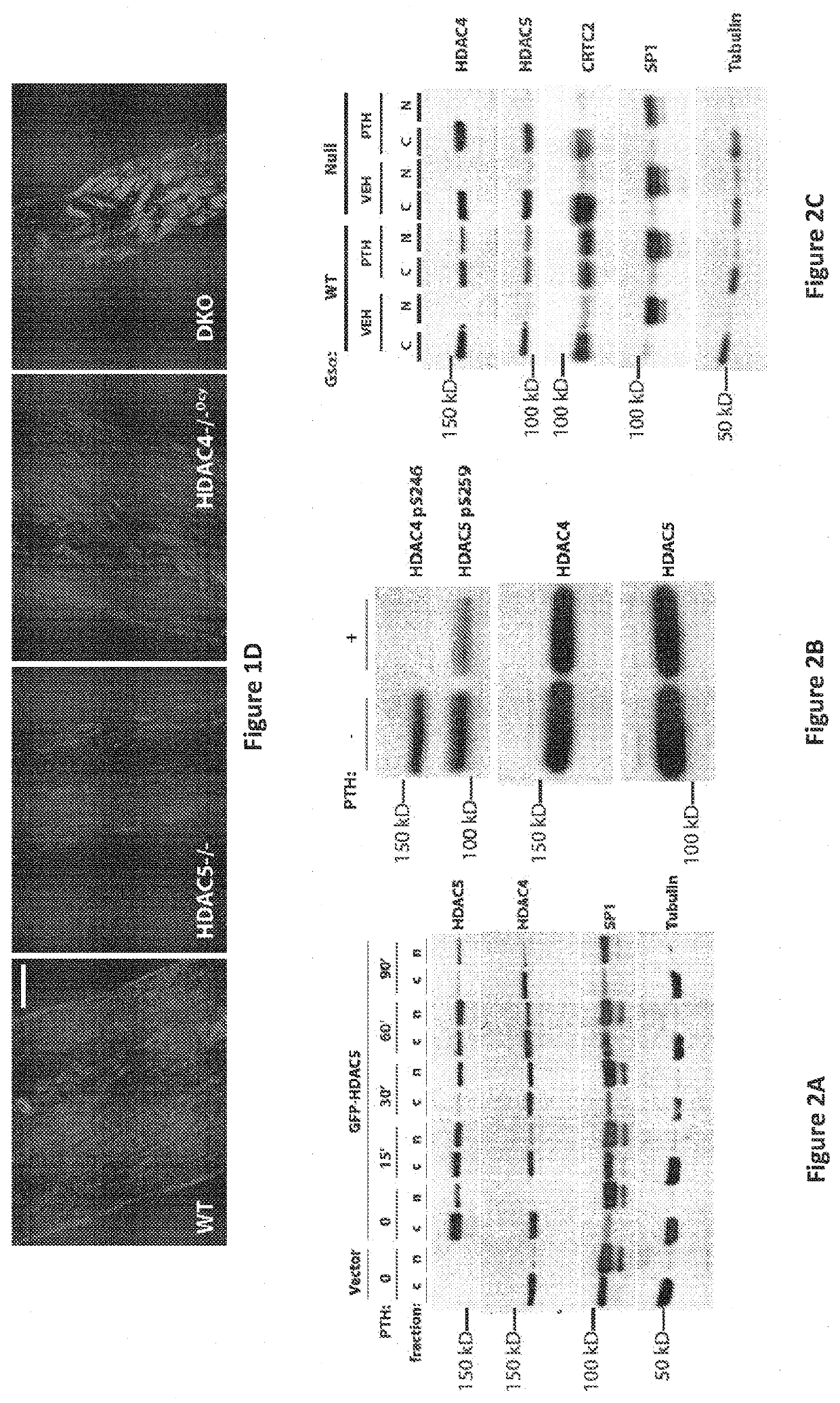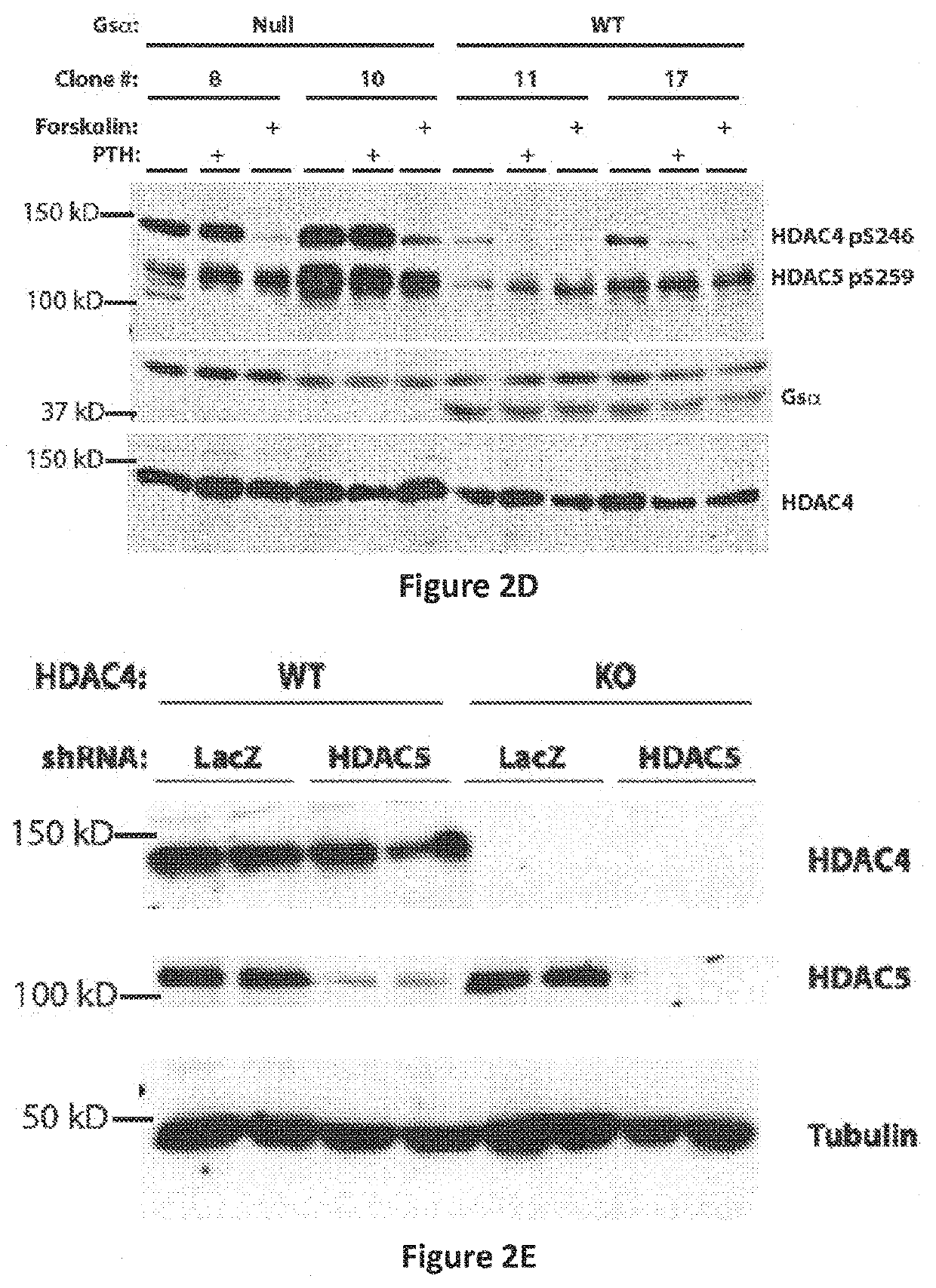Uses of salt-inducible kinase (SIK) inhibitors for treating osteoporosis
a technology of salt-inducible kinase and inhibitors, which is applied in the field of salt-inducible kinase inhibitors for treating osteoporosis, can solve the problems of serious osteoporosis and achieve the effects of increasing the function of osteocytes, increasing the activity of osteoblasts, and increasing the number of osteoblasts
- Summary
- Abstract
- Description
- Claims
- Application Information
AI Technical Summary
Benefits of technology
Problems solved by technology
Method used
Image
Examples
example 1
Preparation of the SIK Inhibitors
[0605]The SIK inhibitors described herein can be prepared according to the methods known in the art. For example, the SIK inhibitors can be prepared according to the methods described in U.S. provisional application, U.S. Ser. No. 62 / 358,524, filed Jul. 5, 2016, and international PCT application publications, WO 2016 / 014551, WO 2016 / 014542, and WO 2016 / 023014; the entire contents of each of which are incorporated herein by reference.
[0606]An exemplary synthesis of YKL-04-114 and YKL-05-093 is shown below. Commercially available trichloropyrimidine 1 was activated with sodium iodide to give iodomethyl pyrimidine 2, which was reacted with 2,6-dimethylaniline to give compound 3. Coupling of 3 with isocyanate provided compound 4 in good yield. Ring-closing reaction using tetrabutylammonium hydroxide afforded common intermediate 5 in good yield. By varying anilines and isocyanates used in the procedure described above, various analogues of 5 could be synt...
example 2
Biological Assays
SIK Controls Osteocyte Responses to Parathyroid Hormone Class IIa HBACs Control Bone Mass Through SOST
[0614]Having previously demonstrated that HDAC5 blocks MEF2C-driven SOST expression in osteocytes (18), it was sought to determine whether HDAC5 and SOST interact in vivo to control bone mass. Two complementary approaches demonstrated that this was the case. First, compound heterozygosity of HDAC5 and SOST rescued the cortical and trabecular high bone mass phenotype of SOST+ / − mice (FIGS. 10A to 10C). Second, anti-sclerostin antibody treatment rescued the trabecular osteopenia present in HDAC5− / − animals (FIG. 10D), which have high levels of SOST expression (18).
[0615]With evidence that HDAC5 control of SOST is physiologically important, it came into question if other class IIa HDACs function in osteocytes. It has previously been reported that HDAC5− / − mice display mild trabecular osteopenia (18) and (26). For these studies, analyses were extended to include the clo...
example 3
Additional Biological Assays
[0668]In Example 3, “YKL” refers to YKL-05-099, and the experimental conditions are described herein or as described in Example 2. Exemplary results of Example 3 are shown in FIGS. 24 to 37D.
YKL-05-099 Uncouples Bone Formation and Resorption by Blocking M-CSF-Driven Osteoclastogenesis
[0669]It was recently reported that PTH signaling in osteocytes blocks the activity of the kinase, salt inducible kinase 2 (SIK2). Treatment of mice with YKL-05-099 once daily (single dose, 6 mg / kg) for 2 weeks led to effects similar to those of intermittent PTH: increased osteoblast numbers, increased bone formation, and increased bone mass. However, unlike PTH, YKL-05-099 treatment led to reductions in osteoclast numbers despite increased levels of RANKL. The goal of the current study is to understand how YKL-05-099 regulates osteoclast differentiation.
[0670]8-week-old male C57B / 6 mice were treated with vehicle or different doses of YKL-05-099 (2 mg / kg, 6 mg / kg, 18 mg / kg) o...
PUM
| Property | Measurement | Unit |
|---|---|---|
| resorption | aaaaa | aaaaa |
| mass | aaaaa | aaaaa |
| pharmaceutical composition | aaaaa | aaaaa |
Abstract
Description
Claims
Application Information
 Login to View More
Login to View More - R&D
- Intellectual Property
- Life Sciences
- Materials
- Tech Scout
- Unparalleled Data Quality
- Higher Quality Content
- 60% Fewer Hallucinations
Browse by: Latest US Patents, China's latest patents, Technical Efficacy Thesaurus, Application Domain, Technology Topic, Popular Technical Reports.
© 2025 PatSnap. All rights reserved.Legal|Privacy policy|Modern Slavery Act Transparency Statement|Sitemap|About US| Contact US: help@patsnap.com



